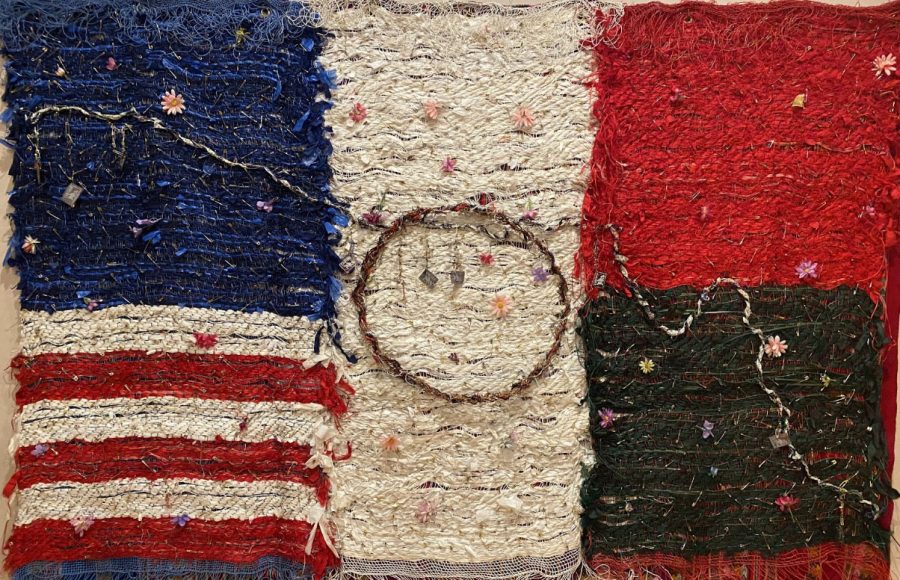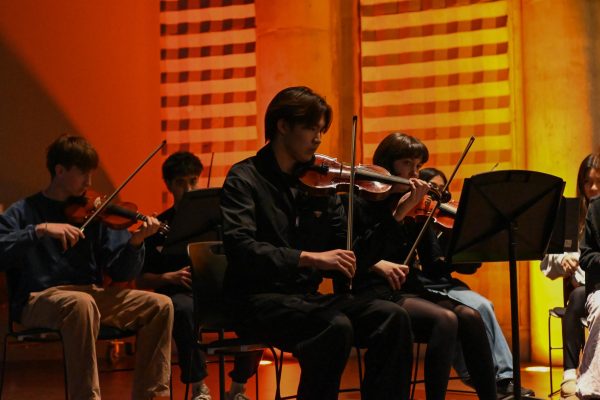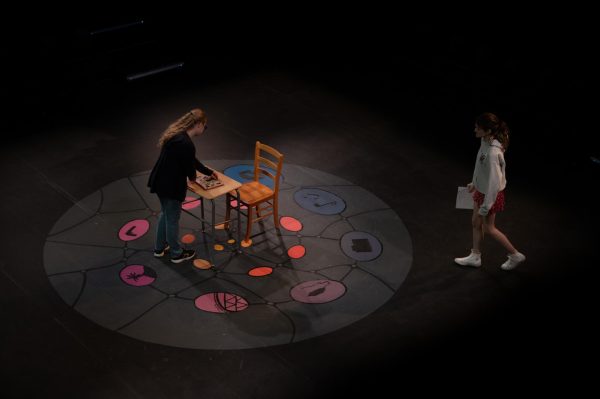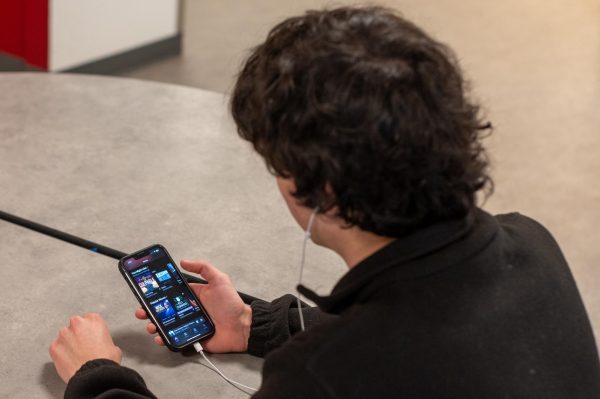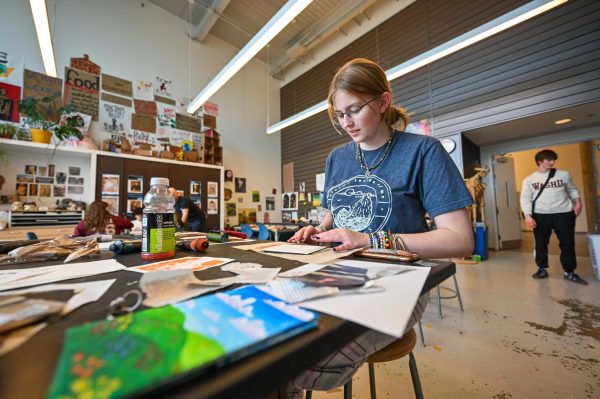Modern activism, historical art
Contemporary artists connect to heritage through Mexican textiles
SUBTLE BEAUTY. Each of the art pieces in “Woven” — at the National Museum of Mexican Art through April 19 — only has a biography for the artist but no description, forcing the viewer to interpret the work for themselves. The museum at 1852 West 19th St. is the only musuem in the greater United States solely devoted to the display of Mexican art.
On the far side of the gallery, a white textile with a pattern of black weaving dangles from two strands. On the other side, a video shows a woman weaving and pounding. She wraps black strands and white strands of cotton around hundreds of vertical white strings, which combine to make the beautiful textile. The viewer realizes that the textile in the video is hanging in the museum.
Seeing the woman’s image projected onto her own artwork helps one appreciate the time and skill, demonstrating the thousands of years of history behind this art form.
At the National Museum of Mexican Art in the Pilsen neighborhood, the exhibition “Woven” impressively illustrates the Mexican-American border with small-but-beautiful traditional Mexican textiles by five contemporary Mexican and Mexican American women. While the exhibit effectively helps the viewer appreciate the work involved in ancient textile making, it does not convey how making textiles relates to modern issues facing people along the Mexican-American border.
Although textile weaving has been in Mexico since 6,500 BCE, contemporary artists continue to use the traditional style to make modern statements. The artwork varies in material and color depending on the message or style. Traditionally, spinning and weaving were jobs given to women. The five artists included in the exhibit — Tanya Aguiñiga, Florencia Guillén, Consuelo Jimenez Underwood, Georgina Valverde, and Marta Palau — use their artwork as a type of activism for and representation of Mexican people.
The artwork, from beautiful garments to a wall of woven cloth — even shown dangling from metal structures about eight feet high — helps the viewer develop an appreciation for the craft. Among the main goals for some artists was creation of traditional pieces but with modern materials to relate their piece to modern society.
The informational text at the beginning of the exhibit explains these pieces are utilitarian but possess beauty and represent tradition.
“They pay tribute to cosmology, ethnic identity, social, cultural, economic and political existence/realities of the individuals who created them, as well as to the textile arts in general from the entire region known as Mexico,” it reads.
Though the art is aesthetically pleasing and contains important meanings and stories, the exhibit is limited to a few pieces created by the five women artists. Despite the pieces being unique and meaningful, the space was too small to convey a real change in the forgotten Mexcian textile world.
The National Museum of Mexican Art is an institution that usually does not disappoint. The “Woven” Exhibit is another instance of the museum continuing to provide up-to-date art that everyone can enjoy, even without a connection to Mexican culture.




















































